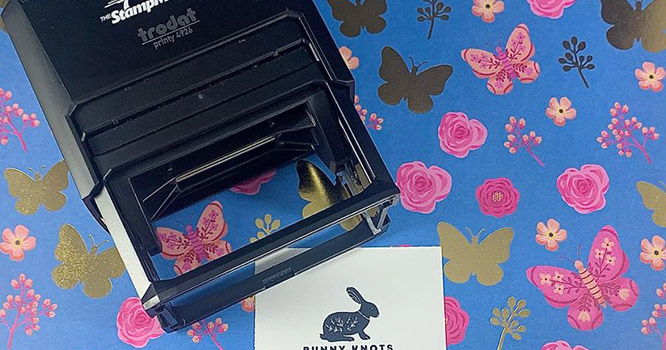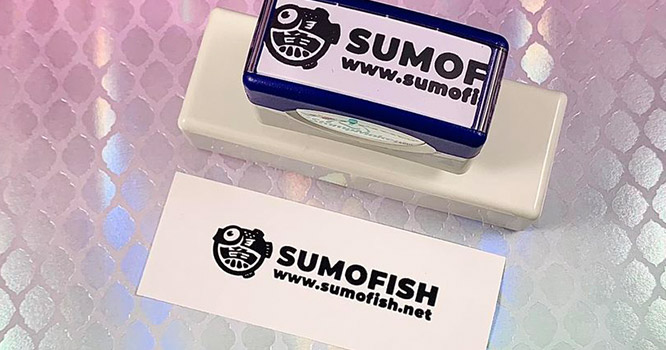Stamps are invaluable when it comes to making clear impressions multiple times. But there are several different types of stamps, and it can be difficult to determine which ones would best support your use. If that’s the boat you’re in, read on.
There are several different types of rubber stamps. Generally, they can be divided into the following categories:
The latter requires a separate ink pad and has its greatest application in crafting. For the sake of quick and easy stamping, we'll focus on pre-inked stamps vs. self-inking stamps for now.

Self-Inking Stamps
Self-inking stamps are composed of a rubber stamp on a rotating mechanism. This re-inks the stamp on an internal pad each time it is used, in order to deliver a quick and consistent impression. The die is stored in the retracted position. These inks are water-based, refillable, and can make up to 10,000 impressions.
Self-inking stamps come at a lower price point than pre-inked stamps. For the most part, this is because they can ink fewer times before needing to be refilled. They work phenomenally when speed is of the essence, though, and should not be considered lower quality than pre-inked stamps.
You should store the stamp in a cool, dry place to stop the ink pad from drying out. When the ink pad does begin to dry out, you should replace or re-ink it. The ink pad can also be replaced to change the stamp color, ink type, or attributes. Finally, be careful with the surfaces that you stamp on, as rough surfaces may wear down the design on the die.

Pre-Inked Stamps
Pre-inked stamps have an internal ink well that regularly saturates an impression pad to provide extremely clear and precise impressions. In contrast to self-inking stamps, these inks are often oil-based. These stamps last for 50,000 impressions and refill easily.
Pre-inked stamps do have a few advantages over self-inking stamps. Since there is no flipping motion, it is often easier to line up a pre-inked stamp in the exact area you want to stamp. The impressions from these stamps are also incredibly clean and will not smudge after drying if stamping on a non-porous surface. Due to these attributes, pre-inked stamps are generally more expensive than self-inking stamps.
In order to get the best impressions from your pre-inked stamp, you should follow certain care guidelines. When re-inking a stamp, you should add a couple drops to the reservoir when it begins to dry out. This allows the ink to saturate the ink cells in the impression pad. When doing this, be sure to use the same type of ink and not add too much, as it can make the stamp bleed.
You should also store the stamps in cool, dry spots to keep the ink from drying or settling. Similarly to self-inking stamps, pre-inked stamps will last longest when used on smooth surfaces.
The Decision
So, which stamp is best for you? Self-inking stamps are less expensive and sturdy. Their water-based ink means that impressions don’t bleed easily and dry quickly on non-porous surfaces. Pre-inked stamps are more expensive but offer crisp, long-lasting impressions.
Self-inking stamps can stamp 10,000 times before needing to be refilled. Pre-inked stamps can stamp 50,000 times before needing to be refilled.
Self-inking stamps are great for:
- Fast stamping
- Heavy use
- Using multiple ink colors
- Looking for a budget friendly option
This can be places like offices and businesses where logos or envelopes need to be quickly and frequently stamped.
Pre-inked stamps make the most sense when lining up your stamp or high-volume use is of the essence.
So, which stamp is best for you? Look at your use-cases and see what fits your needs the best!